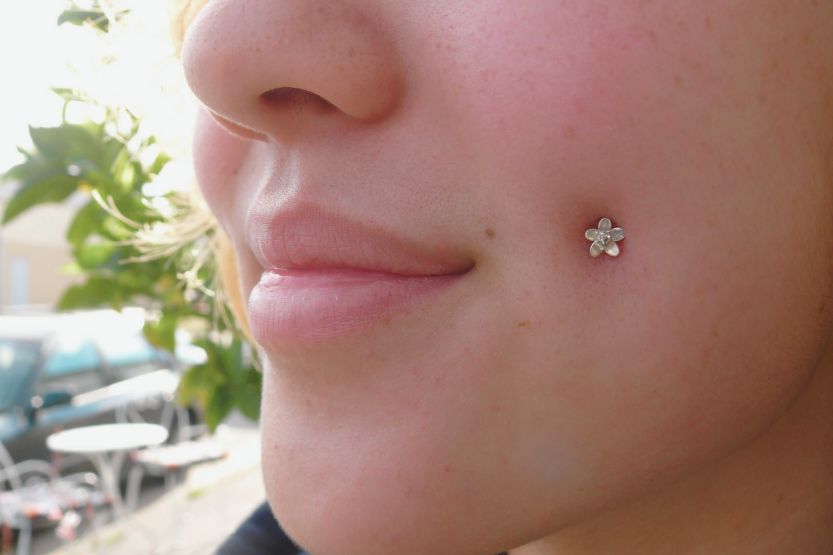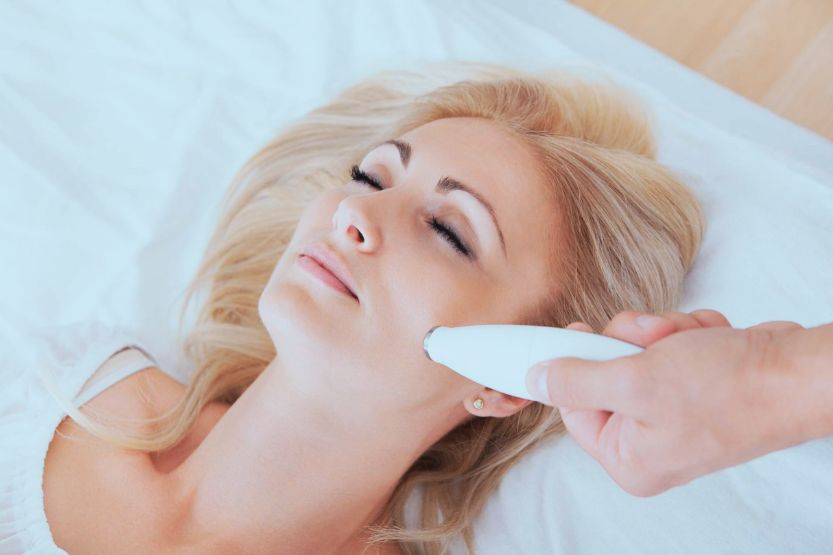Have you ever wondered why some people have mouth corner dimples while others don’t? What caused these physical anomalies, and can you still get them even if you were not born with them?
Mouth corner dimples result from a cheek muscle, the zygomaticus major, splitting into two bundles. This happens even before birth. While in the embryo, the muscle can split into the superior and inferior bundles. The superior bundle is at the top corners of the mouth, while the inferior is at the bottom corners.
Read on to learn more about mouth corner dimples, their causes, how common they are, and whether you can get them.
What Are Mouth Corner Dimples?

Among the Features That Many People Want to Have
Although scientifically considered a facial deformity, corner mouth dimples are among the features that many people want to have. Dimples are small impressions on the skin and can occur in different parts of the body.
However, when people hear the word “dimple,” they usually associate it with the ones found on the cheeks. Dimples on the chin are often called cleft chins.
As the name suggests, mouth corner dimples (aka “cheek dimples” or just “dimples”) are on the sides of the mouth. Dimples usually occur on both sides of the mouth. However, they can also appear on just one side in rare cases.
Occur Due to the Irregular Growth of Certain Facial Muscles
Technically called fovea buccalis; cheek dimples occur because of the irregular growth of certain facial muscles during embryo development.
A set of facial muscles split into two. The one located at the corners of the mouth became too short. This causes the skin to tuck into the corners of the mouth when smiling.
Although dimples are not uncommon, many people do not have them. This is due to dimples formed by the differences in facial muscle development.
For the longest time, those who have it believe they inherited their parents’ dimples. However, this is quite debatable.
How Do Mouth Dimples Form?
What causes mouth dimples? Mouth corner dimples mainly result from a developmental change in the zygomaticus major’s facial muscles. These are the muscles involved in making facial expressions. Specifically, these muscles raise the corners of the mouth when smiling.
People without dimples are considered “normal.” Their zygomaticus major muscles begin on the zygomatic bone in the cheek. The muscle then runs down, getting attached to the corner of the mouth.
In people with dimples, the muscle comes in two muscle fiber groups going down to the mouth. One bundle attaches to the mouth’s lower corner and the other to the upper corner.
The splitting of the muscle is called a bifid zygomaticus major muscle. The movement of the skin covering this split muscle causes the dimple to form. Though technically a congenital disability, cheek dimples do not inconvenience the person. This means that there is no need to correct them.
Many people actively seek plastic surgery that will give them cheek dimples; more on this later.
Are Dimples Attractive?
Ask any group of people if they think dimples are attractive, and most will answer yes. Some may even say that mouth dimples make people look younger than their age. These features also make those who have them friendlier than most.
Many cultures associate beauty with dimples, and some groups even associate dimples with good luck. Some research aimed to figure out if people found dimples attractive.
One study showed that men prefer women with similar facial features they have. These include eye shape and color, hair color, and dimples.
This means that men with dimples prefer partners that have them, too. Although the study mainly focused on male preference, it is quite apparent that women like dimples on their partners.
Aside from being attractive, dimples can also help people communicate. A study on the facial features of humans found that having dimples makes smiles more noticeable. This is a big help in conveying more information.
How to Get Mouth Corner Dimples Naturally

If you are born without dimples and prefer getting them, there are natural ways to achieve them. This means there is no need to resort to plastic surgery if these natural methods work:
1. Pucker Up
Pucker your lips and suck your cheeks into your mouth. Avoid clenching your teeth when doing this. Your cheeks should slightly curve inwards while you do this. Hold this for as long as you can, and then relax. Repeat this as many times as you can.
2. Use Your Fingers to “Crease” Your Face
Feel around your face to find the thinnest part of your cheeks. This is where the dimples would form if you had them. Gently hold down that part of your cheeks using your index fingers and smile. Check yourself in the mirror to see if it looks right. Reposition your fingers if necessary.
Let go of your cheeks while still smiling. The dimples should still be there for a while. Note that this will only temporarily give the impression of having dimples (no pun intended). Still, it should be enough when you want to take selfies.
If you want to make them last a lifetime, hold the dimples in for at least 30 minutes daily. Do this exercise regularly, and you will have small recessions in your cheeks.
Here’s a bit of a disclaimer, though. There is no guarantee that these exercises work. Most testimonials that said these exercises work is anecdotal and unverifiable.
3. Use Makeup
You can also use makeup to mimic the look of dimples. Professional makeup artists have this technique down pat. However, if you are a beginner, here are the steps to recreate dimples using simple makeup:
Gauge the Location for the “Dimples”
Look in the mirror and smile. Natural creases should appear at the corners of your mouth. Your “dimples” should be placed just right outside them. When smiling, make sure that you do so naturally. This will make your dimples look more natural.
Mark the Positions of Your Dimples
Use a dark brown eyeliner or eyebrow pen to mark the positions of your dimples. Place the dot where you want the top of the dimples to be. Dark brown makeup is ideal because it will blend better than black or other colored makeup.
Draw Crescents on Your Cheeks
Relax the muscles of your face. Draw small crescents coming down from the dots you made earlier. Use the same eyeliner or eyebrow pencil with which you made the initial mark. Ensure the line does not extend more than an inch below the mark. Also, make the line just slightly curved.
Blend and Re-draw If Needed
Blend the line into your skin using a smudge stick or just the tips of your fingers. Check in the mirror if it looks good enough. If not, you can add more makeup until it looks natural.
4. Get Cheek Piercings
For many years, cheek piercings have been in the mainstream, at least in the body modification industry. These piercings can mimic the look of dimples. You only get cheek piercings from a professional and reputable body piercer.
Also, let the piercings heal before you remove the jewelry. Removing the jewelry too early might not create a dimple that is deep enough to notice. Once the piercing heals properly, you can remove the jewelry and let the piercing close naturally.
Once the piercing closes, a bit of scar tissue will be left. It will not be quite visible, but it will give you an artificial dimple whenever you smile. The problem with this method is that the dimples might not look uniform. The reason is that you will be relying more on how the piercings would heal.
Can You Get Mouth Corner Dimples with Plastic Surgery?
How to get mouth corner dimples if you don’t have them? Is it possible to get dimples? Yes, it is. A type of plastic surgery called dimpleplasty where a surgeon will create a natural-looking pair of dimples.
Almost all plastic surgery clinics these days offer this option. Sometimes, you can walk into the clinic and complete the procedure within the day.
What to Expect During Dimpleplasty Surgery?
Consultation with the Plastic Surgeon
Even if you are a walk-in patient, you will start with a consultation with the plastic surgeon. You will receive a brief explanation of the procedure and its possible side effects. If you are fine with all the conditions the surgeon sets, you can proceed by preparing for the surgery.
Surgeon Will Mark the Location of the Dimple
The surgeon will mark the dimple location on your face. You can choose where to place the dimples. You can also let the surgeon pick the best location. However, it would be better to let the surgeon pick the location. The reason is that they know where dimples will look more natural.
Create a Small Incision Inside the Mouth
The surgeon would then pass an absorbable suture through the cheek and create a small incision inside the mouth.
The suture would catch the underside of the dermis, which will then loop back into the incision. This will create an indentation on the surface. The tighter the suture, the deeper the dimple will be.
Procedure Will Last at Least 30 Minutes
The next step would be tying the suture to the buccinator muscle. This makes it appear whenever you curl up your lips, just like how a real dimple would.
This is an extremely short procedure. Most experienced surgeons can finish this surgery as fast as 30 minutes for both cheeks.
You also do not need to go under anesthesia for dimpleplasty. The surgeon will only need to use a local anesthetic to numb a small area of your face.
Minimal downtime allows you to complete the procedure during your lunch break. You can even return to work afterward, although you must wear a mask.
What to Expect During Recovery?

No Scarring on the Surface
Are you worried that the surgery will leave a scar? The dimpleplasty procedure requires minimal incisions; your surgeon will do it inside the mouth. This means there will be no scarring on the surface whatsoever.
Limited to Soft Food for a Week
The recovery procedure is similar to when you have dental work done. You are limited to a soft food diet for a week. You also have to avoid eating spicy food in the meantime.
Not Required to Go Back to the Clinic for Suture Removal
There is also no need to go back to the clinic to have the sutures removed. Your body will absorb it as the wound heals.
Use a Strong Mouth Gargle to Reduce Risk of Infection
You might also get a prescription for a strong mouth gargle to reduce the risk of infection. Rarely do these kinds of surgery result in swelling. However, keep your mouth from moving too much during recovery to prevent it further.
Dimples Might Look a Bit Deep During the First Month
Don’t be surprised if your new dimples look too deep during the first month. This will gradually recede and become shallower as the tension on your suture loosens. When your body absorbs the sutures, your dimple will appear shallower and look more natural.
Completely Heal After a Week of Two
After a week or two, your dimpleplasty procedure would heal completely. This is possible if you take care of your mouth properly and it does not get infected. If you experience any mild infections, return to your surgeon to get a prescription for antibiotics.
Frequently Asked Questions (FAQs)
Do Dimples Disappear?
No, dimples do not disappear. Because dimples result from a muscular deformity, they will not fade even as the person ages. The dimple will remain even if one gets a bit chubby or the skin starts to sag:
How Long Do Dimpleplasty Results Last?
After the body dissolves and absorbs the sutures, the resulting scarring inside the mouth will be permanent. In other words, it is safe to say that dimpleplasty results are permanent.
Can Dimpleplasty Be Reversed?
To a certain extent, yes. The surgeon will need to remove the tension caused by the scar tissue from the procedure to release the skin. However, there might still be a bit of an indentation left. Despite that, it will still not be as noticeable as it used to be.
Are Dimples Lucky?
In the US, those without dimples would refer to those with a gelasin grin as lucky. Coincidentally, the Chinese people have long since considered that mouth corner dimples are lucky.
They symbolize good luck and fortune. In addition, they associate dimples with attractiveness. They believe “a dimpled wife will bring good luck and happiness to any family.”
Can Dimples Appear on Other Parts of the Body?
Yes, dimples are not just limited to the cheeks. There are other parts of the body where dimples can appear. For instance, dimples can appear along the lower back of women. In that case, these are the Venus dimples.
Dimples can also result from a wound healing wrong. The scar tissue would embed itself into the skin, causing an indentation. Some people accidentally got dimples on their arms due to their vaccinations as kids somehow healing improperly.
Are Mouth Corner Dimples Rare?
Even though dimples are “highly heritable” traits, almost 80% of Americans do not have them. Considered among the most common genetic mutation in humans, you would suppose that they would be more common.
On the other hand, dimples are not confined to certain nationalities and races. Asians, Africans, and Europeans all have equal chances of developing dimples.
Are Cheek Dimples Different from Chin Dimples?
Although cleft chins and dimples on the corner of the mouth look similar, they are very different from each other. Cheek dimples result from a muscular deformity where the muscles in the cheek split into two.
On the other hand, a cleft chin is a malformation on the lower jaw bone. A cleft chin is the result of the lower jaw not fusing completely.
Many people get plastic surgery to get cleft chins, most of whom are men. Cleft chins also have a strong connection to masculinity. This is strange because many women also inherently have cleft chins.
Conclusion – What Causes and How Can You Get It
Mouth corner dimples are the result of a physical genetic mutation. During fetal development, the zygomaticus major muscle in the cheeks would split in two.
One part attaches to the top corner of the mouth while the other is at the bottom. When these muscles contract as you smile, the corners of the mouth form an indentation called dimples.
In almost all cultures, dimples symbolize beauty. Many even consider it a symbol of good luck. Although dimples are not extremely rare (20% of Americans have them), many people also like to have them.
It is quite ironic that people love seeing dimples despite being technically a genetic deformity. Many have even gone as far as getting dimpleplasty. So here’s to mouth corner dimples – the physical deformity everyone wished they had.
Read next:
Tips on How to Ensure Botox Works Faster and More Effectively

![Read more about the article Putting Chocolate in Coffee [Benefits and Tips]](https://howchimp.com/wp-content/uploads/2022/05/putting-chocolate-in-coffee-300x200.jpg)
![Read more about the article Too Much Makeup – How Much Is Too Much? [With Example Pictures]](https://howchimp.com/wp-content/uploads/2021/04/too-much-makeup-300x200.jpg)
